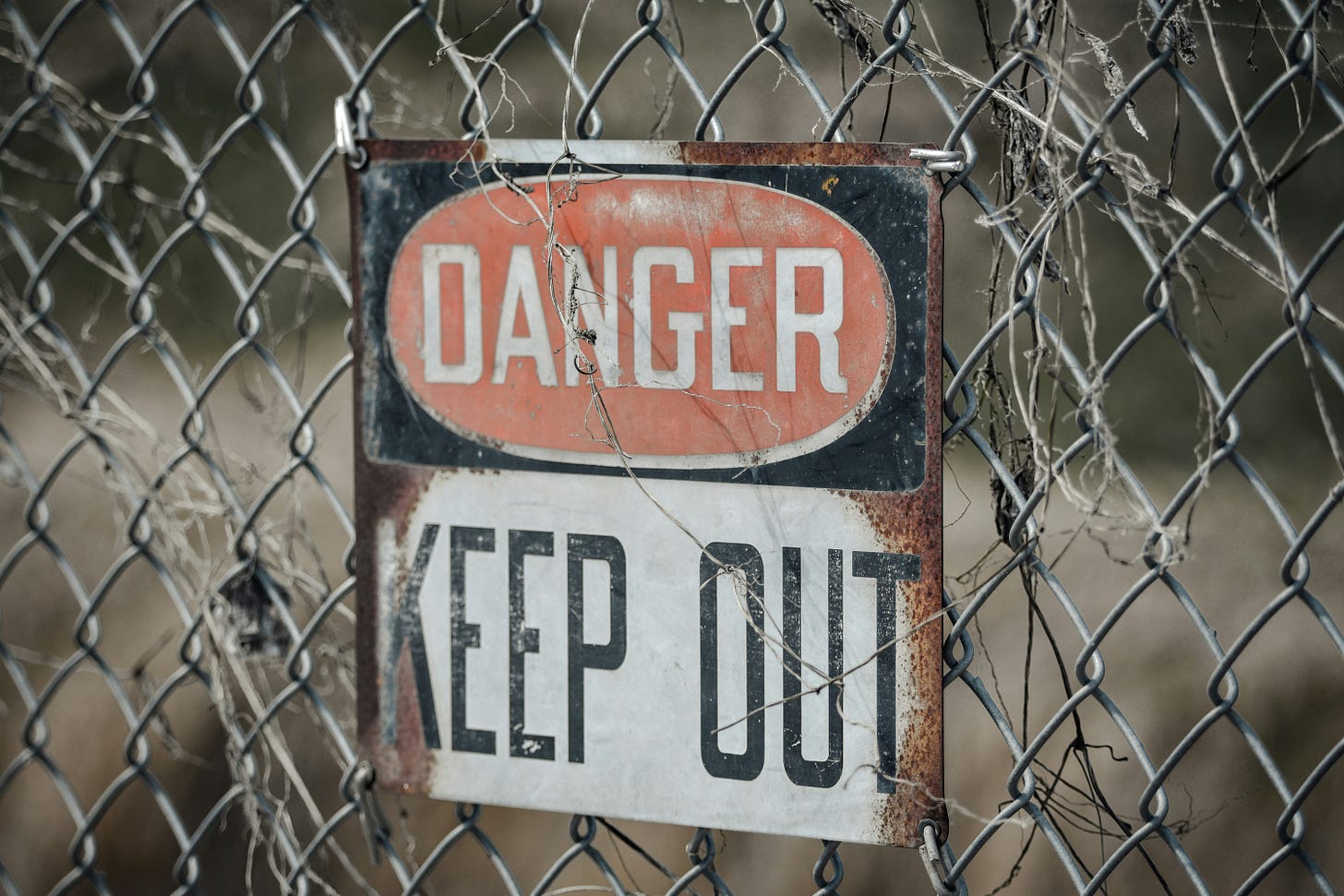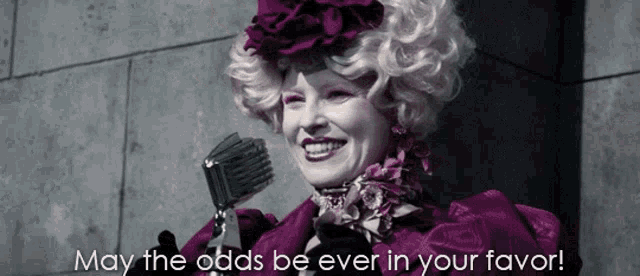Hindsight May Be 20/20, But That Doesn’t Make It Right
What poker teaches us about strong decision-making.
They say hindsight is 20/20. Looking back, the picture feels perfectly clear:
I should’ve bought that stock at $5.
I should’ve quit that toxic job sooner.
I knew that idea was going to flop.
But just because the outcome is obvious in retrospect doesn’t mean the original decision was wrong. At the time, you didn’t have today’s perfect information. You had probabilities, trade-offs, and incomplete data, just like every other entrepreneur, investor, or creator making bets in the real world.
When we judge decisions only by outcomes, we fall into the logical fallacy know as “resulting.” We assume a bad result means a bad choice, or a good result means a good one. But in reality, great decisions can lead to terrible outcomes, and terrible decisions can get lucky.
Consider a poker player who goes “all-in” holding Pocket Aces. Statistically, the strongest starting hand, giving them over an 85% chance of winning.1 If the opponent gets lucky and hits a miracle card, the player still loses the pot. Did they make a bad choice? Absolutely not. It was a great decision with a terrible, low-probability outcome.
Second-guessing old choices won’t give you an advantage. Building a repeatable process that tilts the odds in your favor will.
The Myth of Perfect Hindsight

Hindsight makes the past look clearer than it really was. When something goes wrong, it feels obvious that we should have chosen differently. When something goes right, we convince ourselves we “knew it all along.” Psychologists call this hindsight bias: our brain’s tendency to rewrite history so it fits neatly with the outcome.2
But the real danger of this bias isn't just distorted memory, it's disastrous real-world action. When we fall victim to the resulting fallacy and judge a decision only by its final outcome, we erode our capacity for smart risk-taking and learning.
The Cost to You (Paralysis): Personally, submitting to resulting leads to decision paralysis. If every failed attempt is judged as a fundamental mistake rather than a low-probability outcome, you learn to fear the retrospective judgment. You stop making bold, necessary bets (the very choices that lead to outsized growth) because the pain of being judged "wrong" in hindsight outweighs the potential reward. This keeps you trapped in safe, low-upside strategies.
The Cost to Your Team (Toxic Culture): Managerially, resulting breeds toxic organizational culture. A leader who punishes employees for a well-reasoned, smart decision that failed due to pure variance (bad luck) teaches the entire team the wrong lesson. Soon, no one is willing to take an intelligent risk. Instead, employees pursue only the safest, most obvious, low-upside strategies to avoid being the one who is unfairly blamed when a good bet doesn't pay off.
But here’s the truth: decisions are never made with perfect information. The danger of hindsight is that it tricks us into believing the past was inevitable. It wasn’t. It was probabilistic. And when you treat probabilities like certainties, you lose the ability to learn from your choices.
That’s why resulting is such a trap. If you only judge decisions by their outcomes, you’ll swing wildly between overconfidence and regret. Instead of asking, Was my reasoning sound? you ask, Was I right? And that’s a terrible way to get better at anything.
Five Steps to Get Better at Decision-Making

If hindsight can’t be trusted, how do you actually improve the quality of your choices? The answer is to focus on process, not outcomes.
Former professional poker player Annie Duke wrote an entire book on this called Thinking in Bets, where she shows how to treat decisions like wagers: you can’t guarantee a win, but you can improve your odds with the right habits. She outlines a simple approach anyone can adopt: treat choices as bets, separate process from outcome, and keep improving your reasoning over time.
It’s about consistently tilting the odds in your favor rather than getting fixated on certainty. Here are five practical ways to apply her framework.
1. Separate Process From Outcome
It’s easy to judge decisions by what happened afterward. In marketing, this shows up all the time. You spend weeks planning a campaign, testing creative, and tightening your targeting, only to watch it flop. Meanwhile, that off-the-cuff tweet you dashed off in five minutes takes off and racks up thousands of shares.
If you judge only by outcome, you’d call the polished campaign a failure and the throwaway post a success. But that’s upside down. The campaign followed a strong process, it just didn’t hit this time. The tweet went viral because of timing and luck, not because you suddenly cracked the code.
The lesson: outcomes are feedback, not verdicts. Don’t confuse what worked with what was well-reasoned. If you stick with a good process, the wins will come.
Next time you’re assessing a past decision, ask yourself:
Did I weigh the real options in front of me?
Did I use the best information available at the time?
Did I consider both risks and rewards?
What did I know for sure, and what was just an assumption?
If this decision had gone the other way, would I still think my reasoning was sound?
If you can answer yes to these questions and be clear about your assumptions, then it was a strong decision regardless of the outcome.
2. Think in Probabilities, Not Absolutes
We’re all wired to crave certainty. It feels stronger to say, “This launch will work” than to admit, “I think there’s a 70% chance this launch will work.” But certainty is a story we tell ourselves after the fact. Reality is always probabilistic.
Think about weather forecasts. When the forecast says 70% chance of rain, and the day turns out sunny, was the forecast “wrong”? Not really: 70% still leaves room for 30%. The same is true in business. You can launch a well-researched product and still have it flop, not because you made a bad decision, but because you landed in the 30%.
This is why Annie insists on probabilistic thinking. In poker, you can play a strong hand perfectly and still lose. In business, you can back a smart strategy and still come up short. The point isn’t to eliminate uncertainty, it’s to account for it honestly.
When you’re weighing a new decision, replace absolute language with probabilities. Instead of saying “this will work,” try:
“I’m 70% confident this will work, 20% it breaks even, 10% it fails.”
“What are the realistic scenarios, and how likely is each?”
“If I had to bet money on this, what odds would I set?”
Writing it down helps. Over time, you can compare your estimates to real outcomes, which sharpens your calibration. You’ll learn where you tend to be overconfident and where you underestimate risk. The more you practice, the better you get at sizing your bets.
3. Keep a Decision Journal
Memory is a terrible record-keeper. After the fact, we convince ourselves we “always knew” what would happen. That’s hindsight bias at work, and it can distort how we judge our past choices. Without a record, it’s too easy to retroactively smooth over our reasoning and learn the wrong lesson.
This is why Annie Duke recommends keeping a decision journal. Poker players log the hands they play, not because they expect to remember every detail, but because they know their memory will rewrite the story otherwise. In business, the same principle applies. Writing down your reasoning before you act creates a snapshot you can revisit later. One that isn’t colored by the outcome.
Before making a significant choice, jot down a quick entry answering:
What options am I considering?
What probabilities do I assign to each outcome?
What assumptions am I making?
Why am I leaning toward this choice?
Then, after the decision plays out, revisit the entry. Ask:
Did my assumptions hold?
Was my probability estimate close?
What can I update for next time?
You don’t need to log every tiny decision; focus on the ones that matter. Over time, your journal becomes a training ground for pattern recognition. You’ll see where your reasoning is strong, where you’re consistently optimistic or cautious, and how your calibration improves. This isn’t about catching yourself being “wrong.” It’s about building a feedback loop that makes your future decisions sharper.
4. Build a Decision Group
Even the best decision-makers go blind to their own biases. That’s why poker players huddle after games to review hands, not to brag about the pots they won, but to dissect their reasoning. They know one set of eyes isn’t enough.
In Thinking in Bets, Annie argues the same applies outside poker. We all need people around us who won’t just nod politely, but will actually pressure-test our logic. A good decision group doesn’t grade you on outcomes. They challenge your assumptions, poke holes in your reasoning, and point out where you’re fooling yourself.
Choose the right people. Find a small circle of peers who are smart, objective, and not afraid to challenge you.
Frame it as a bet. Instead of vague debate, ask: “Would you bet on that? At what odds?” This forces people to clarify their level of confidence.
Focus on reasoning, not results. The point isn’t to predict the future, it’s to sharpen the process by which you’re making the call.
Done well, a decision group acts like guardrails. It stops you from leaning too hard into your blind spots and keeps your process grounded. Over time, their pushback makes your decisions more calibrated and resilient than they could ever be on your own.
5. Design for Learning
Even the best decisions won’t always pay off. That’s not failure, that’s variance. In poker, you can play a hand perfectly and still lose to a lucky draw. In business, you can make a well-reasoned choice and still get blindsided by a competitor, a news cycle, or sheer bad luck.
Annie’s point is that the real mistake isn’t losing, it’s failing to learn. Most people look at an outcome and ask, “Was I right?” A better question is, “What can this teach me about how I decide?”
Treat each decision as a rep in the gym. One rep won’t transform you. But if you approach every decision as practice, your process gets stronger and sharper over time. You build an edge by learning faster than everyone else, not by eliminating mistakes.
Decision-Making Pitfalls to Avoid

Even with a solid process, it’s easy to get tripped up by hidden biases. These are some of the most common traps and how to spot them in yourself:
Resulting: Judging decisions purely by the outcome. Good result = good decision, bad result = bad decision. In reality, luck plays a huge role. Always go back to process first.
Hindsight Bias: Looking back and believing you “knew it all along.” This rewrites history and blinds you to the fact that it wasn’t obvious in the moment. Keep a decision journal to anchor yourself to what you actually thought.
Overconfidence: Speaking in absolutes (“this will work”) instead of acknowledging probabilities. The stronger your certainty, the harder it is to adjust when things go sideways. Force yourself to assign odds.
Confirmation Bias: Seeking information that validates your choice while ignoring data that contradicts it. Decision groups help here: pick peers who will poke holes in your reasoning.
Survivorship Bias: Copying “winners” you see in the spotlight while ignoring all the unseen failures. Just because a strategy worked for one company doesn’t mean it was the cause of their success, or that it will work for you.
Hindsight may be 20/20, but that doesn’t make it right. The past always feels clearer than it really was, and that clarity is seductive. But if you judge decisions only by their outcomes, you’ll learn the wrong lessons, punishing yourself for smart bets that didn’t pay off, or rewarding sloppy thinking that got lucky.
The real edge comes from resisting that trap. Focus on the things you can control: separating process from outcome, thinking in probabilities, writing down your reasoning, inviting others to challenge you, and treating every choice as a chance to learn.
The real edge comes from resisting the hindsight trap. Focus relentlessly on the few things you can control: separating process from outcome, thinking in probabilities, writing down your reasoning, and inviting others to challenge you. Treat every choice as practice. Because in the long run, you don’t win by chasing certainty; you win by making consistently better bets and letting the law of averages work in your favor.
Want a Second Set of Eyes on Your Decisions?
One of the hardest parts of improving decision-making is spotting your own blind spots. Really Good Business Ideas Premium subscribers get access to direct DMs and office hours, where you can share the decisions or assumptions you’re wrestling with and get real feedback. Think of it as your own decision group, a place to pressure-test your reasoning before you place the bet.
To endless possibilities,
Casandra
Premium Bonus: Decision Making Prompt Swipe File
Want to put this framework into action with AI? Premium subscribers get access to a swipe file of ready-to-use prompts for each step of the decision-making process, from premortems to probability thinking, decision journals, group simulations, and postmortems.
Think of it as your personal coach-on-demand. Just copy, paste, and let AI stress-test your assumptions, challenge your reasoning, and surface blind spots before you make the call.



